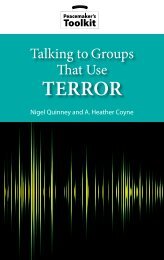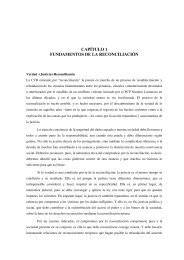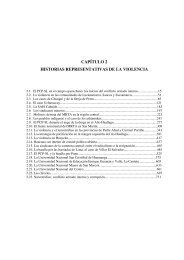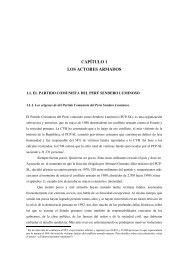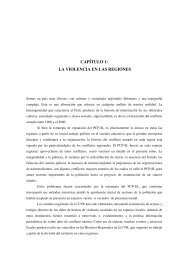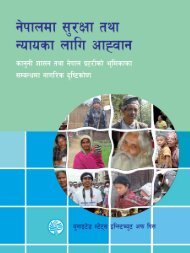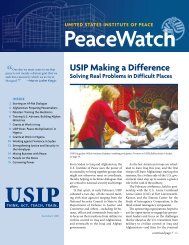Download PDF (5.43 MB) - ReliefWeb
Download PDF (5.43 MB) - ReliefWeb
Download PDF (5.43 MB) - ReliefWeb
Create successful ePaper yourself
Turn your PDF publications into a flip-book with our unique Google optimized e-Paper software.
SECTION 1 | Lesson 1.1 | Defining Conflict◆◆Can you think of a conflict you experienced that ended up being positiveand that helped you learn something about yourself or someoneelse?III. Teacher Directed (15 Minutes)1. Divide students into groups of three. See sidebar for grouping suggestions.2. Introduce the different levels of conflict: personal, local, national, andinternational. Personal—something that directly involved or impactedyou; Local—something that happened in your community, school, state;National—something that happened in the country; or International—something that happened in the world.3. Provide students with an example of each type of conflict.4. Ask students to think about and share stories about conflict in their lives.They can think personally, locally, nationally, or internationally. Tell themthat while one person is sharing, the rest of the group should listen withoutinterruption and write down key words that run through everyone’sstories. Refer back to the exercise “When I say conflict, you thinkof . . .” for examples.5. Circulate as groups are sharing.6. Call out “Switch” every two minutes to ensure that every student gets toshare.7. Distribute sticky notes to each group, with each group getting a differentcolor. Once the groups are done, tell them to share their lists of key wordsout loud and write each word on a sticky note, writing only one word persticky note. Direct them to stick all of their group’s sticky notes on a pieceof chart paper.IV. Guided Practice (15 minutes)1. Once all groups have placed their sticky notes on chart paper, have eachgroup share their words with the whole class and hang their chart paper onthe wall/board. They can stick the notes directly on the board if you don’thave chart paper.2. After all groups have shared, tell them that they are going to write a definitionof conflict using the sticky note words from any of the groups.3. Tell them that their group needs to decide on their top ten words (as a start)from any of the sticky notes hanging. Once they have decided on their topten, have one representative from each team come to the front and havehim or her take their group’s ten sticky notes. There will likely be multiplesof some words. If a group wants a word that has been taken, they can writethat word on a new sticky note.4. Tell each group to write their definition of conflict using only the stickynotes they have selected. They may write transition and conjunction wordsbetween sticky notes (i.e., the, and, if, etc), and they may gather more stickynotes as they are working, if they need them.Note: The U.S. Institute of Peace focuseson conflicts beyond U.S. borders. Theseconflicts may be interstate (between countries,e.g., Arab-Israeli conflict) or intrastate(between groups within a country, e.g., theLords Resistance Army and the governmentin Uganda).GROUPING SUGGESTIONSOption 1. Invite students to create a physicalexpression of how they feel about conflict.Have them look around the room andidentify a person who has made a similarexpression. Start clapping slowly and tellthem with each clap they should take onestep closer to their identified classmate/s. Ifthe groups are not the right number, adjustthem accordingly.Option 2. Place a big sign that says conflictin the middle of the room or wear it yourselfto personify conflict. Invite students toposition themselves in relation to the conflictaccording to how they tend to respondto conflict. For example, if they don’t likedealing with it, they can go to the far end ofthe room and turn away from the conflict.If they directly address it, they can standreally close to the conflict. Create groupswith students according to where they arestanding in the room.Note: USIP’s Peace Terms defines conflictas follows: An inevitable aspect of humaninteraction, conflict is present when two ormore individuals or groups pursue mutuallyincompatible goals glossary.usip.org.V. Independent Practice (5 minutes)1. Give time for groups to write their sticky note definitions on chart paper.2. Once done, hang all of the definitions in the room.3. To share, each group can read their definition or have the whole class takea Gallery Walk (a walk around the room) of the definitions.4. Ask some or all of the following questions:◆◆ What similarities and differences do you see between the groups’definitions?Peacebuilding Toolkit for Educators19



